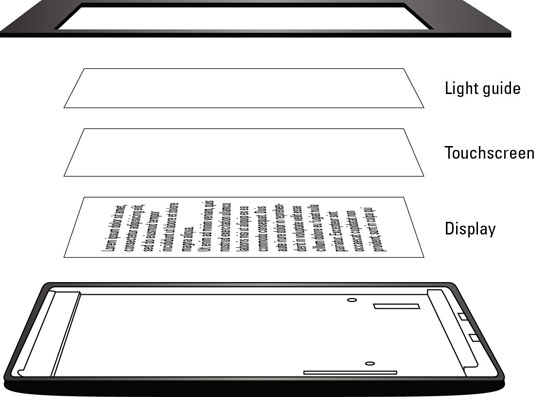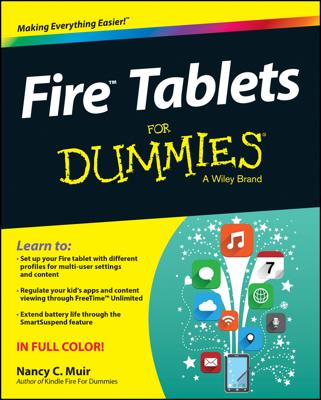Weighing 7.5 or 7.8 ounces (the 3G model is a tiny bit heavier), with a 6-inch-high display, the first generation Kindle Paperwhite provides 2GB of e-book storage (and free Cloud storage for all Amazon content), enough to store approximately 1,100 e-books and other content. With minimal use of wireless and a half-hour of daily reading, the battery charge can last up to two months.
The second generation Kindle Paperwhite shares the same specs mentioned above, but weighs in slightly lower at 7.3 or 7.6 ounces (again, the 3G model is a tiny bit heavier). And with wireless turned off, the light set at 10, and a half-hour of daily reading, the battery charge can last up to two months.
Touchscreen technology
The touchscreen technology introduced in the Kindle Touch has been further developed and refined in the latest generation of the Kindle Paperwhite.
The screen on the device uses capacitive technology, which means that very light touches with your finger — or a capacitive stylus — will cause changes on the screen.
Note that you must use a bare finger or a stylus to use the touchscreen.
The Kindle screen is delicate. Placing heavy objects on top of your Kindle, especially those with sharp edges, can damage the screen. Dropping your Kindle can also break the screen. To protect their investment, many people use covers and screen protectors on their device.
Let your light shine
The Kindle Paperwhite builds on the best of the past and adds a number of new innovations. The improvement that is generating the most buzz is its built-in light.
Before the introduction of the first Kindle Paperwhite in 2012, readers had to use an external light source — the sun, a lamp, or a portable reading light. On a Kindle Paperwhite, however, the light is sandwiched between the layers of the screen and shines toward the surface of the e-ink display.
As a result, the light does not shine in your eyes as it does with a backlit device, such as a tablet or a smartphone. The result? Less eyestrain for you and an overall even distribution of light on the screen. The screen and light make reading in any lighting condition a pleasure.
You can adjust the light for different lighting conditions by using the Light icon on the toolbar.
When describing the screen, users note that it seems very white, almost like paper, and the letters look like they're floating on the display. The contrast of the fonts against the display is darker, too, resulting in a superior reading experience.

The e-ink screen
The Kindle was one of the first widely available commercial e-readers to use e-ink in its screen display. E-ink is fundamentally different from an LCD screen, such as laptop, smartphone, and computer screens.
With e-ink, thousands of microcapsules of ink are held between two layers of polymer. Reversing the electronic charge changes the capsules from positive to negative, which changes the color from light to dark and, ultimately, results in the display on the screen.
E-ink requires little power, which is why the Kindle battery can hold a charge for up to two months with 30 minutes of reading per day and the light set at 10.
In addition, e-ink isn't backlit, which is less fatiguing for your eyes, and more closely mimics a paper reading experience, that is, looking at ink on the printed page. Furthermore, unlike an LCD screen, a Kindle Paperwhite can be read in bright sunlight without glare or loss of display.

